Lesson 3 1850-1874 African American Settlers
NET Nebraska Studies: Lesson 3 African American Settlers
Within Lesson 2 are a variety of activities and materials that can be used with students of various grade levels. All of these items are tied to the NET Nebraska Studies Timeline materials which are shown and linked throughout the lesson. Teachers are not intended to use all of the contents within this lesson but to pick which activities or materials they would prefer to use with their students. Most of the materials are shown within the lesson and/or have external links to the content or other content which may be helpful to the lesson's activities or materials.
You can also directly access all of this lesson at the NET Nebraska Studies website: http://nebraskastudies.org/
Created for NET by Michael Young, former History Department Chair, Omaha Burke High School
1850 - 1874 African American Settlers
CONTENTS OF THIS LESSON
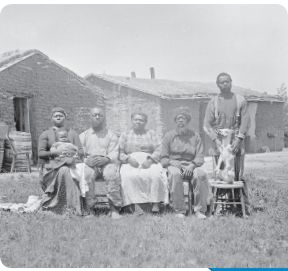
African Americans on the Prairie
1. DISCUSSION African American Settlers in Nebraska Grade Level 4 & 8
2. PHOTOGRAPH ANALYSIS Shores Family Photo Grade Level 12
3. DISCUSSION African Americans of Nebraska Grade Level 12
4. L1 LESSON Plan - African American Homesteaders Grade Level 8 & 12
5. Resources
6. Nebraska Department of Education Content Area Standards
1. African American Settlers in Nebraska Grade Level 4 & 8
Reading & Discussion
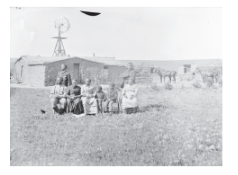
windmill
Have students read the African American Settlers section in the Nebraska Studies 1850-1874 timeline. (Link and Text below)
Then, discuss the following questions:
1. What were pull factors for African Americans to migrate to Nebraska?
2. What were push factors for African Americans to leave their homes?
3. Which of these factors are social, which environmental, which economic? Explain.
http://nebraskastudies.org/1850-1874/african-american- settlers/
Link has access to larger images and the text shown below.
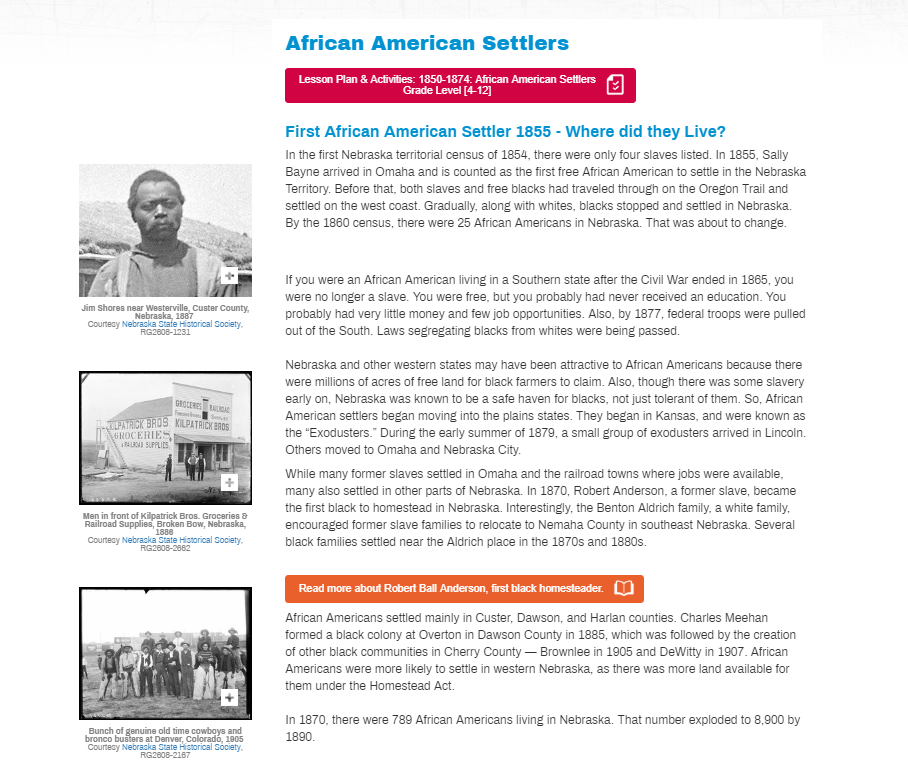
Afircan American Settlers Page 1
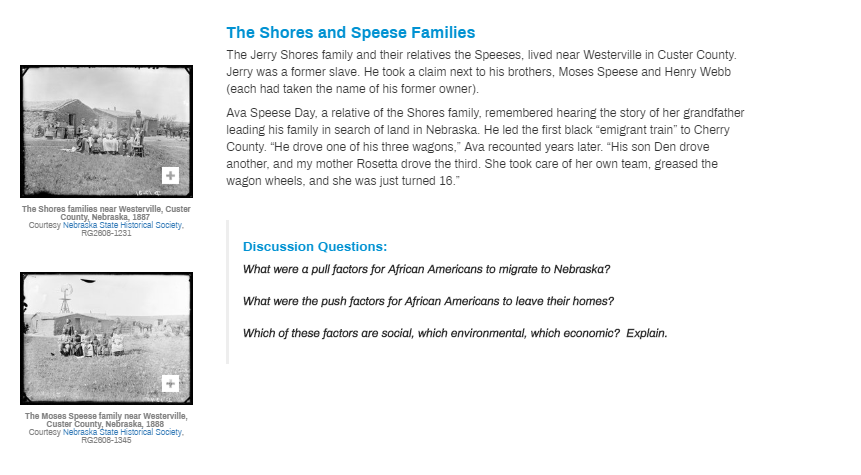
Shore and Spees Family Page 2
Nebraska Department of Education Content Area Standards
Social Studies: SS 4.3.1; SS 4.3.2; SS 4.3.5; SS 4.3.6; SS 4.4.2; SS 4.4.3; SS 4.4.4; SS 4.4.5 | SS 8.4.2(US); SS 8.4.3(US) Language Arts: LA 4.1.6 Comprehension; LA 4.4.1
Information Fluency | LA 8.1.6 Comprehension; LA 8.2.1 Writing Process
2. Activity - Photo Analysis Grade Level 12
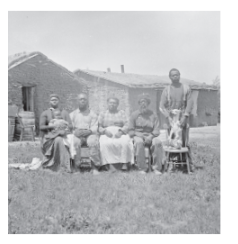
barn
Have students read the Where Did African Americans Live? The Shores and Speese Families page in the Nebraska Studies 1850-1874 timeline. (link and text below)
Link has access to larger images and the text shown below.
http://nebraskastudies.org/1850-1874/african-american-settlers/
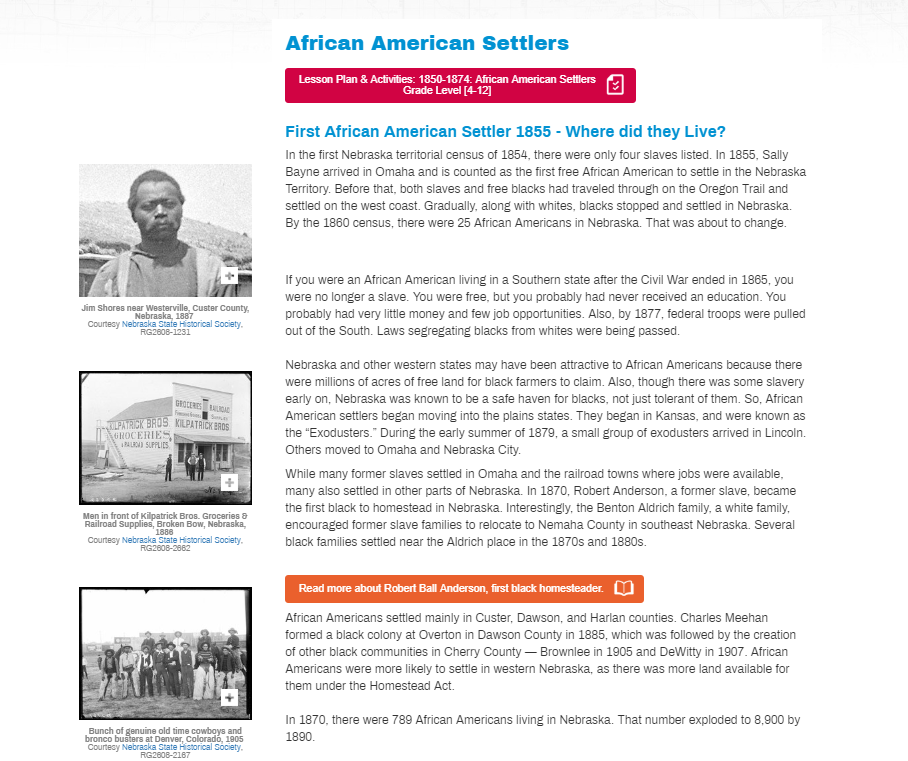
African Settlers
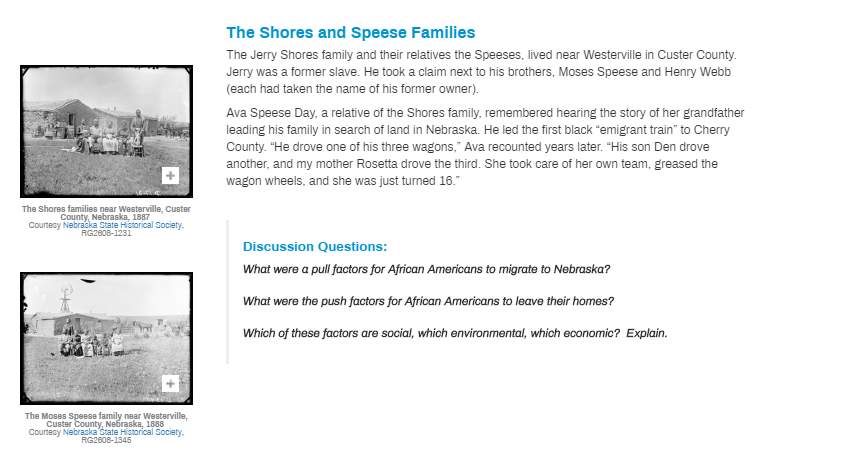
Shores and Speese Families
Have students use the National Archives Photograph Analysis Worksheet in the Resources section at the end of this document to analyze the photograph of the Shores family.
What inferences can you make?
Nebraska Department of Education Content Area Standards
Social Studies: SS 12.1.1; SS 12.3.1; SS 12.3.4; SS 12.4.1(US); SS 12.4.5(US) Language Arts: LA 12.1.6 Comprehension; LA 12.2.1 Writing Process
3. Activity - Discussion Grade Level 12
Have students read the African American Settlers section in the Nebraska Studies 1850-1874 timeline. (see text in 2.Photo Analysis above or use link below)
http://nebraskastudies.org/1850-1874/african-american-settlers/
Have students identify the following African Americans and indicate their connection to Nebraska:
• Speece family
• Sally Bayne
• Robert Anderson
Identify each African American that moved to Nebraska mentioned in this three-page section.
Record beside the name where they settled in Nebraska.
Using a current Nebraska road map and the Nebraska county outline map included in the resources, mark the towns with a dot and the corresponding name of the town and the names of the African American settlers.
In what way did the Civil War lead to African American settlers in Nebraska?
Speculate as to why African American homesteaders became known as Exodusters.
Speculate as to why so many African Americans settled in the western part of Nebraska.
Nebraska Department of Education Content Area Standards
Social Studies: SS 12.1.1; SS 12.3.1; SS 12.3.4; SS 12.4.1(US); SS 12.4.5(US) Language Arts: LA 12.1.6 Comprehension; LA 12.2.1 Writing Process
4. L1 LESSON PLAN Grade Levels 8 & 12
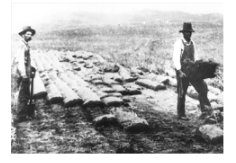
homesteaders
African American Homesteaders - This lesson plan was funded in part by the Cooper Foundation, Abel Foundation, and the Nebraska Humanities Council.
Lesson Objectives
1. Students will analyze why African Americans settled in Nebraska and what challenges they faced.
2. Students will compare and contrast the growth and distribution of African Americans in the latter part of the 19th century and early part of the 20th century with the 21st century in Nebraska. 3. Students will develop skills to analyze primary documents and images.
Introduction
Provide students with the handout on Robert Ball Anderson located in the Resources section at the end of this document. After students have had the opportunity to read the information, conduct a classroom discussion based on the questions that follow the information contained in the handout.
The Process
1. Have students read 2 sections in the Homestead Act Signed section of the 1850-1874 timeline on Nebraska Studies. (use links below or text is shown below)
How Do I Get My Free Land? & The “Proving Up” Form: (link below or text shown below)
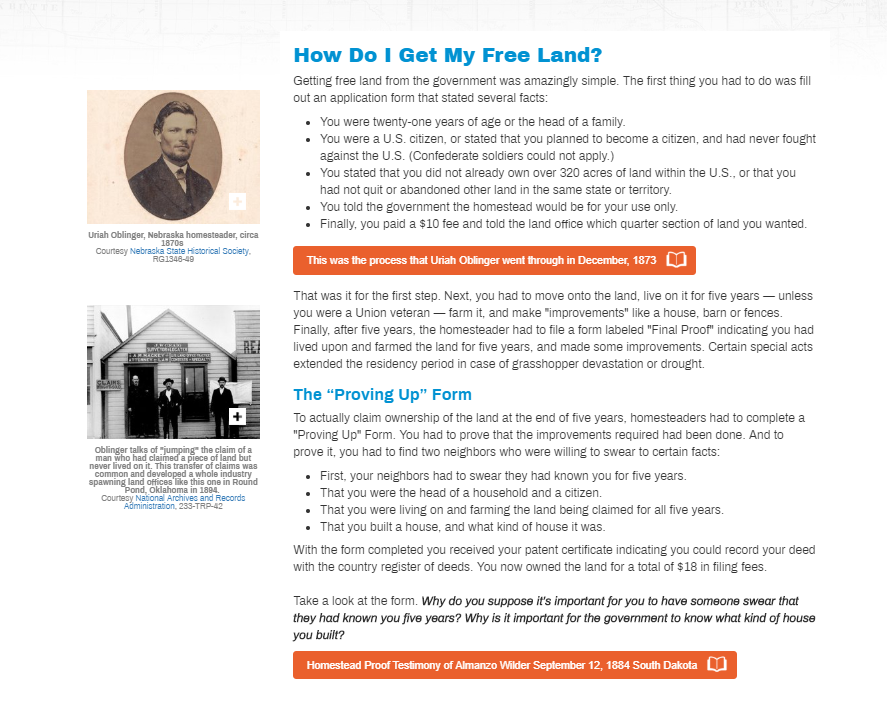
How do I get my free land
2. Then, have students read 2 sections of African American Settlers section of the 1850-1874 timeline on Nebraska Studies:
http://nebraskastudies.org/1850-1874/who-were-the-settlers-who-was-daniel-freeman/
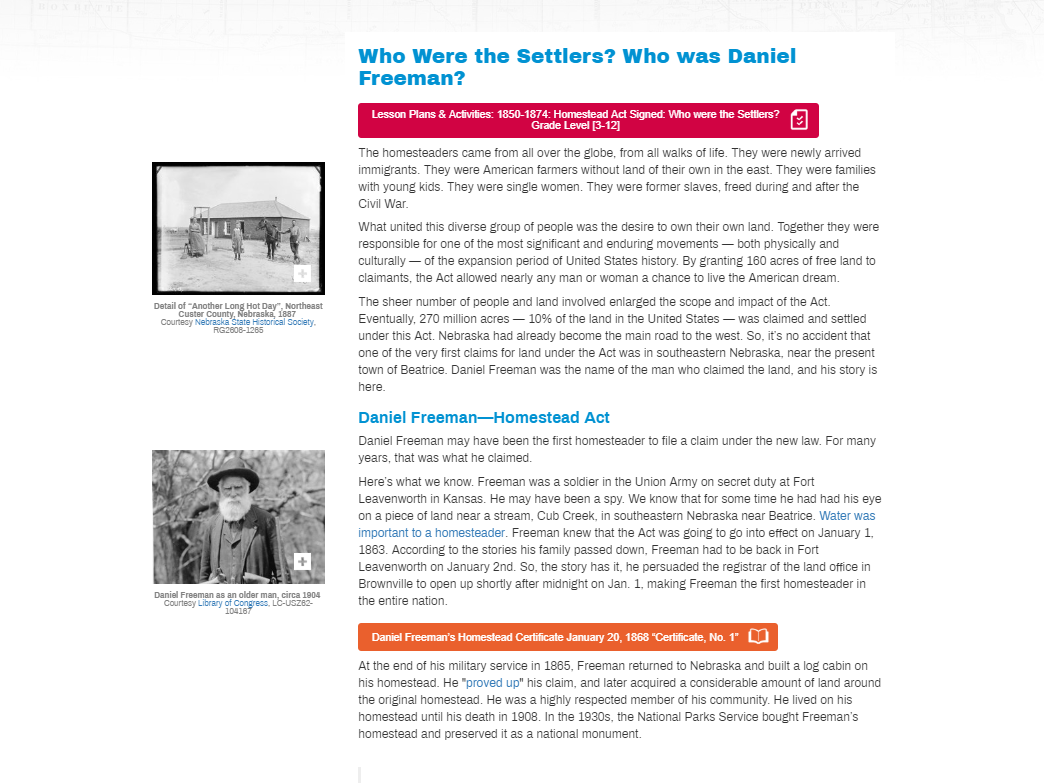
Daniel Freeman
http://nebraskastudies.org/1850-1874/african-american-settlers/
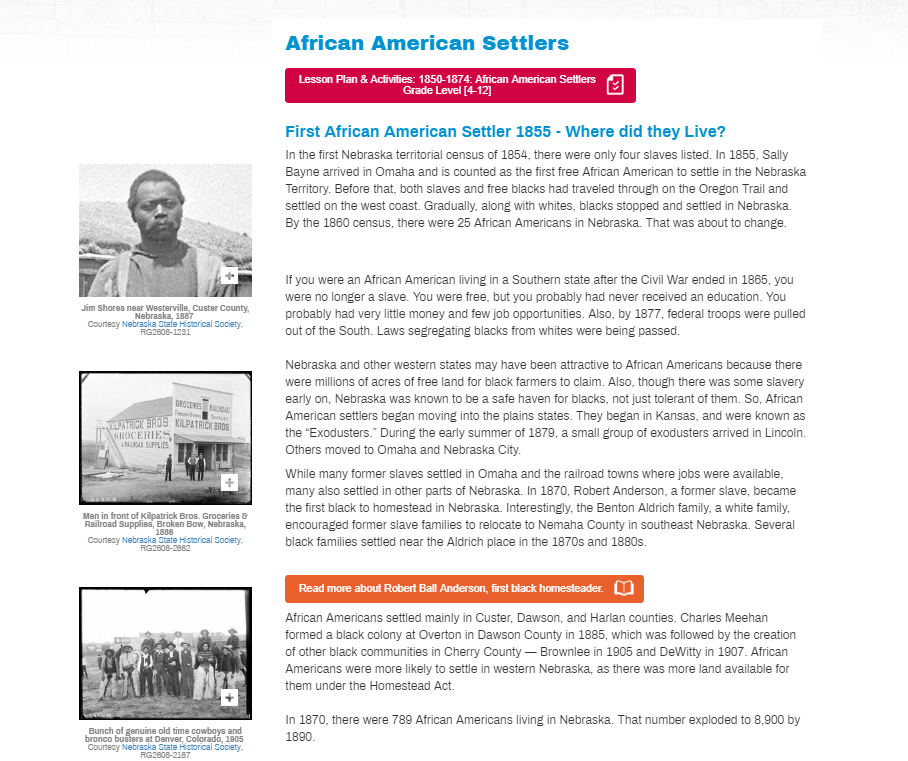
African Settlers
3. Conduct an oral discussion with students over the assigned reading material. Use the following questions as a guide for your discussion:
a. What are the provisions of the Homestead Act?
b. What is a “Proving Up” form? What are the provisions? Why do you think such a form was necessary?
c. Were African Americans qualified to acquire land under the provisions of the Homestead Act? Explain.
d. Were Black homesteaders in the Nebraska area more likely to be treated as equals than in southern cities in the United States? Why or why not?
4. Have students access the National Archives Document Analysis Worksheet in the Resources section at the end of this document and review with them how primary resources are analyzed.
5. Assign individual students or groups of students to use the National Archives Photo Analysis Worksheet located in the Resources section at the end of this document to analyze one or more of the photographs located in the Nebraska Studies website in the African American Settlers section of the 1850-1874 timeline (on the left side of the screen or smaller versions shown below). Or you can complete 6. below as an alternative.
http://nebraskastudies.org/1850-1874/african-american-settlers/
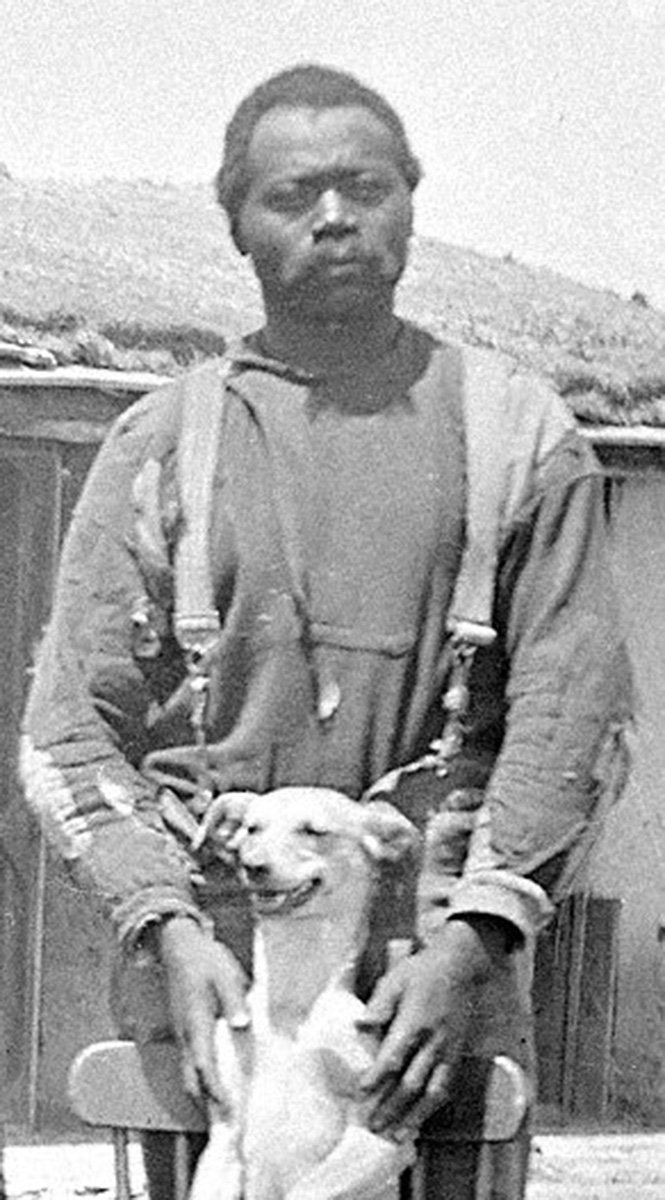
Jim Shores
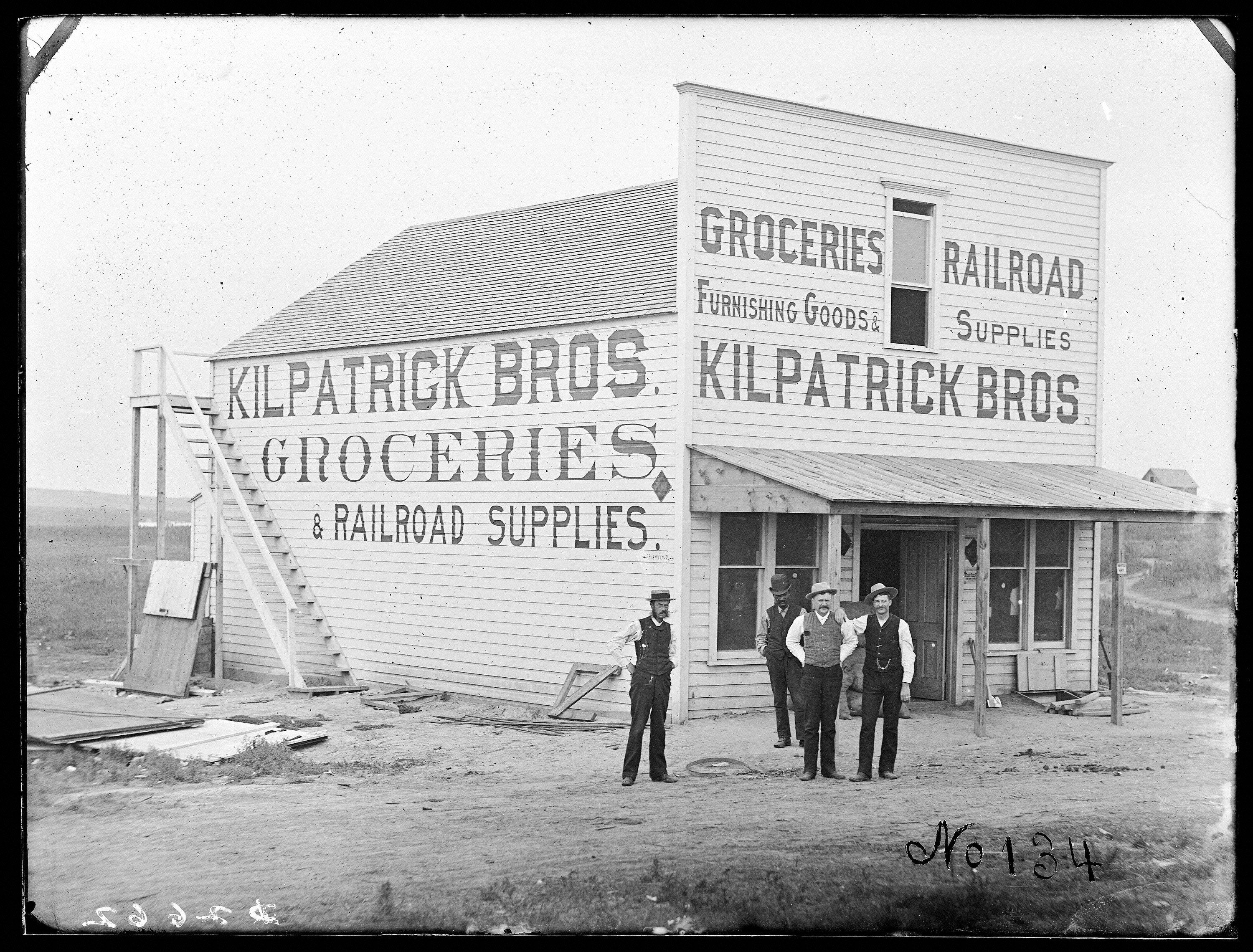
Kilpatrick Grocery
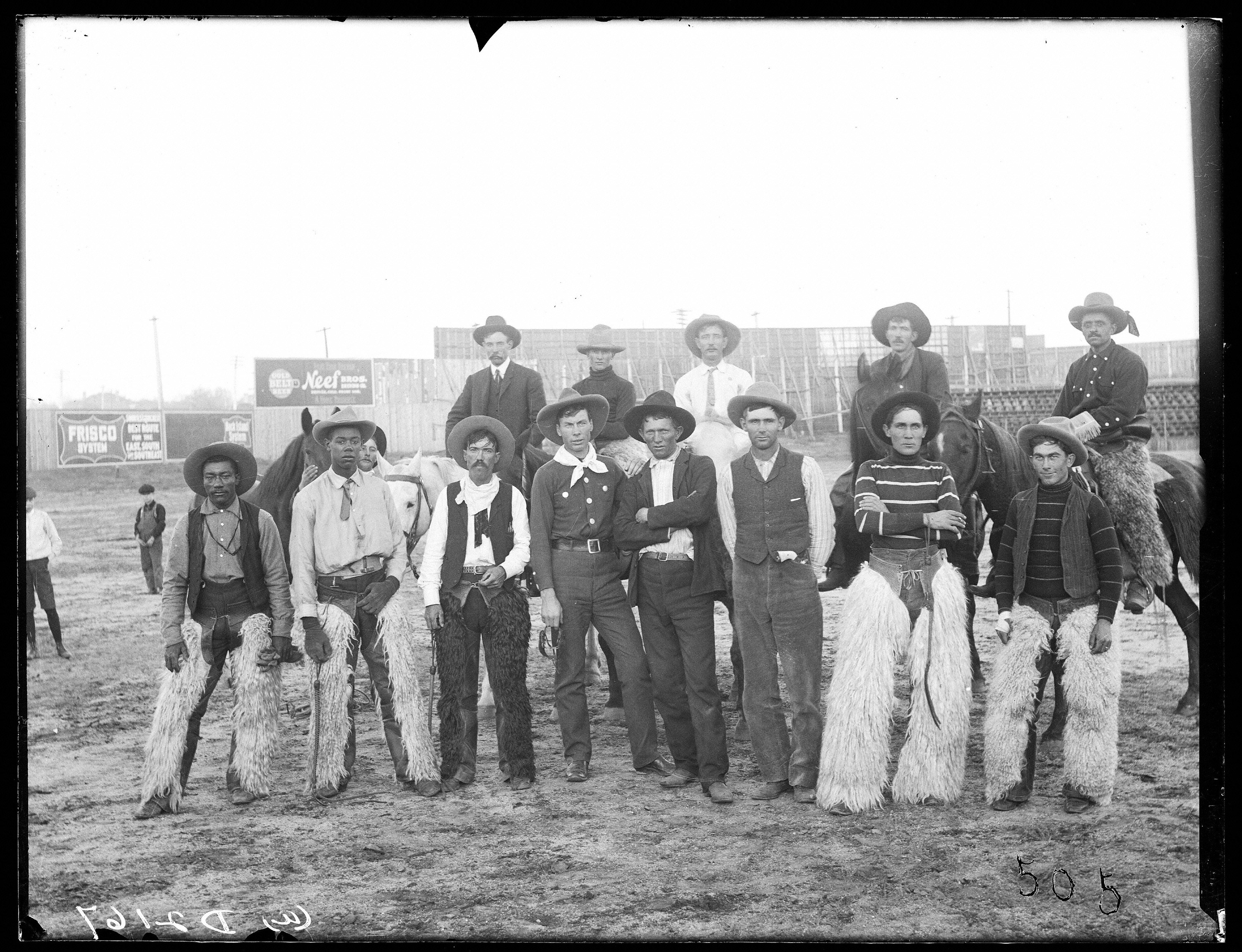
Cowboys
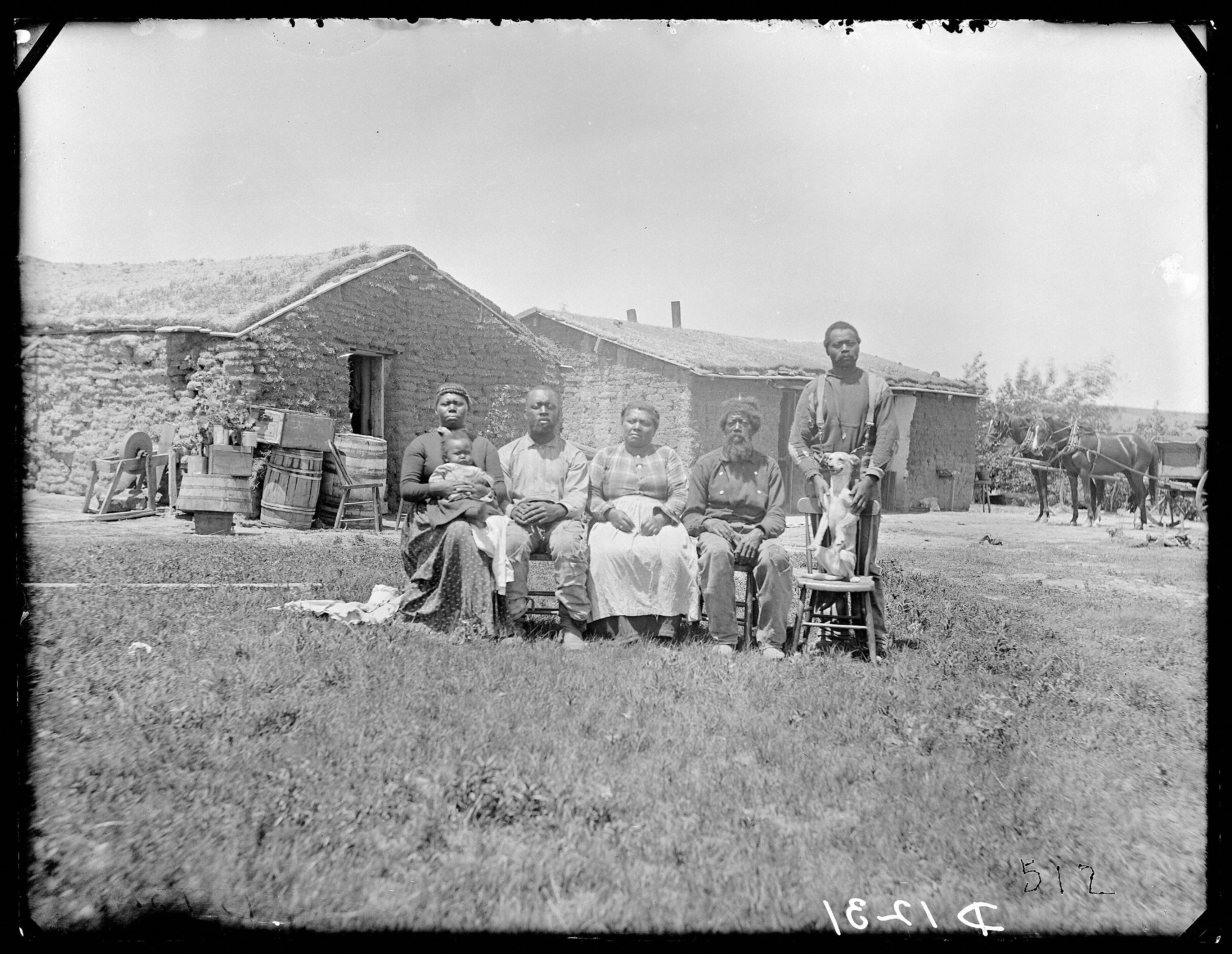
Shores Family
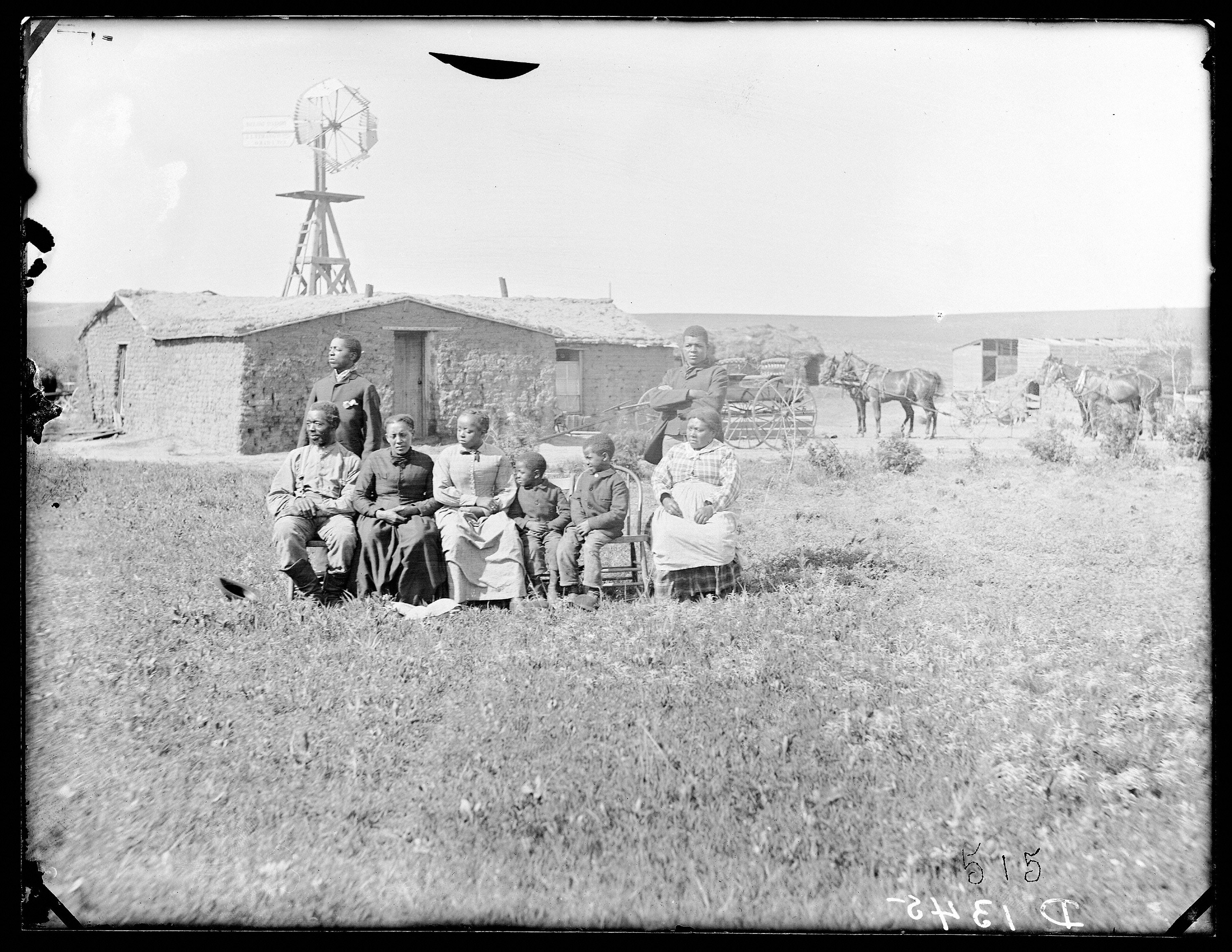
Speese Family
6. Tell students to compare and contrast the two photographs of the Shores and Speese families in the Nebraska Studies website in the African American Settlers section of the 1850-1874 timeline using a Venn diagram located in the Resources section at the end of this document to illustrate their conclusions. (images shown above & link below to site, Venn Diagram in Resources section)
http://nebraskastudies.org/1850-1874/african-american-settlers/
Students should also be able to answer orally or in written form answers to the following questions:
a. How is the clothing between the two families different? Why?
b. What are the differences in the number of horses and wagons? For what would the wagons be used?
c. Are the buildings different in structure and number? Explain.
d. Are there the same numbers of people, and are they of the same sex in each photograph? If not, how are they different?
Then, Instruct students, in a cooperative endeavor or individually, to compare and contrast the following photographs located in the segment, African American Settlers:
• Jim Shores, Men in front of Kilpatrick Bros. Groceries & Railroad Supplies store, Bunch of genuine old time cowboys
Students should include answers to the following questions:
a. What was the time period for each photograph?
b. Are different occupations indicated?
c. Did the same photographer take the photographs?
d. Which of the occupations inferred by the photographer was the occupation most African Americans chose during this time period? Why?
e. Were all the photographs taken of Black Americans living in Nebraska? Explain.
f. Are there any indications indicated in the photographs that the photographer was prejudice against Black Americans?
7. Conclude the discussion of African American homesteaders by engaging students in an oral discussion of the following questions:
a. Why did Black settlers tend to settle on homesteads rather than in urban areas?
b. Were white settlers prejudiced against African American settlers? Why or why not?
c. Name at least three African American homesteaders and indicate where they settled.
d. Have the number of African Americans living in Nebraska on farms or ranches increased or decreased in the 21st century? Why or why not? Is the same true for European Americans?
Learning Advice
1. Review the Nebraska State Historical website at http://www.nebraskahistory.org/ and familiarize students with the Nebraska History magazine located at: https://history.nebraska.gov/publications/nebraska-history-magazine
Teachers/students can order copies of the magazine from the NSHS or check with their local library to see if they have copies.
2. Review the contents of the Nebraska Department of Education Social Science Resource Home Page and review the links with students. https://www.education.ne.gov/socialstudies/
3. Review with students the following people and define any terms that are included:
Robert Ball Anderson Speese family first Nebraska Constitution
Sally Bayne 13th /14th/15th Amendments Nebraska becomes a state
S. Butcher Black Codes “Proving Up” form
Bertha Calloway Exodusters Reconstruction
Ava Speese Day Kansas Nebraska Act sharecroppers
Oblinger family and letters Homestead Act provisions Timber Culture Act
Shores family Ku Klux Klan Venn diagram
Benjamin Singleton
4. Have students access the following websites and review with them the contents of each website:
• Prairie Settlement Nebraska Photographs and Letters. [Butcher photographs and Oblinger letters] http://memory.loc.gov/ammem/award98/nbhihtml/pshome.html
• PBS. New Perspectives on the West. African-Americans in the West. http://www.pbs.org/weta/thewest/lesson_plans/lesson04.htm
• Teaching with Documents. The Homestead Act of 1862. National Archives. Digital Classroom. https://www.docsteach.org/
Emphasize the following:
a. Where were African American most likely to settle in Nebraska and why?
b. What was the connection between the Homestead Act provisions and African Americans?
c. What is the distribution of the African American population in Nebraska today as compared/ contrasted with their distribution in the latter part of the 19th century and the earlier part of the 20th century?
d. Differentiate between African American homesteaders and African Americans who came to Nebraska cities in the early 20th century to work in packing houses, factories, etc.
Conclusion
Students will have learned why African Americans settled in Nebraska and what challenges they faced. They will understand how the Homestead Act affected African Americans, and why they tended to settle in western Nebraska. In conclusion, they will develop skills to analyze primary resources such as letters and photographs and become familiar with a variety of websites related to Nebraska studies.text
Assessment Activity Activity # 1: Analytical Essay
Instruct students to do a written analysis of a minimum of 500 words about the challenges Black homesteaders faced in their attempt to acquire land ownership in the late 19th and early 20th centuries in Nebraska. Students should include the following in their analysis:
1. How provisions in the Homestead Act made it possible for Blacks to own land
2. Where Blacks tended to homestead in Nebraska and why
3. Reception the Black homesteaders received from White homesteaders
4. Two examples of Blacks who owned a homestead or ranch
Have students include documentation, a bibliography, etc.
Use a rubric to assess student knowledge. Teachers can create their own rubric or use one of the following rubrics:
Rubrics: General Rubric http://www.socialstudieshelp.com/rubric.htm
School Improvement in Maryland. Instruction. Social Studies Rubric. http://www.mdk12.org/instruction/curriculum/hsa/critical_thinking/soc_stds_rubric.html
Assessment Activity Activity #2: Multiple Choice Assessment
Make copies for all students of the Multiple Choice worksheet in the Resources section at the end of this document.
Answers to the Multiple Choice assessment activity can be found online in the Lesson Plan Guide
Assessment Activity Possible Extension Activities
• Instruct students to use the National Archives Photo Analysis Worksheet located in the Resources section at the end of this document as a guide to analyze the photograph of the Jerry Shores family located on the PBS Archives of the West website located at http://www.pbs.org/weta/thewest/resources/archives/seven/w67i_shores.htm
• Have students access the Prairie Settlement Nebraska Photographs and Letters. [Butcherphotographs and Oblinger letters] from the Library of Congress. American Memory Collection located at http://memory.loc.gov/ammem/award98/nbhihtml/pshome.html
Then have students do a search for the photograph titled, “African American rancher and two other men on a ranch near Goose Creek, Cherry County, Nebraska”. Instruct students to use the National Archives Photo Analysis Worksheet located in the Resources section at the end of this document as a guide for analyzing the photograph.
• Direct students to do a search for Afro-Americans from the Library of Congress American Memory Collect “Prairie Settlement: Nebraska Photographs and Family Letters, 1862-1912” at http://memory.loc.gov/ammem/award98/nbhihtml/pshome.html
Then instruct students to do one or more of the following activities:
1. Compare and contrast the two photographs titled:
a. “Group in front of the printing office of the Overton herald newspaper Supplies store, Broken Bow, Nebraska”
b. “Group in front of the printing office of the Overton Herald newspaper”
2. Use the National Archives Photo Analysis Worksheet located in the Resources section at the end of this document as a guide for analyzing the photograph titled “Bunch of genuine old time cowboys and bronco busters at Denver Colorado” (2 photographs). Ask students if they think there were similar black cowboys in Nebraska and indicate why or why not.
• Direct students to access the PBS website titled “the West: the Geography of Hope” located at http://www.pbs.org/weta/thewest/program/episodes/seven/theexodust.htm
Have students read the information listed and answer the following questions:
1. Who was Benjamin Singleton?
2. What were Singleton’s key goals?
3. Who is Bertha Calloway?
4. Who were the Exodusters and how did they get that name?
5. Compare the Black settlers in Kansas with the Black settlers in Nebraska.
6. How did the movement of Exodusters to Kansas affect Black settlement in Nebraska
Nebraska Department of Education Content Area Standards
Social Studies: SS 8.4.2(US); SS 8.4.3(US); SS 8.4.5 | SS 12.1.1; SS 12.3.1; SS 12.3.4; SS 12.3.6; SS 12.4.1(US) SS 12.4.1(WLD); SS 12.4.2(US); SS 12.4.4(WLD); SS 12.4.5(US); SS 12.4.5(WLD) Language Arts: LA 8.1.6 Comprehension; LA 8.2.1 Writing Process; LA 8.3.1 Speaking | LA 12.1.6 Comprehension; LA 12.2.1 Writing Process; LA 12.3.1 Speaking
Resources:
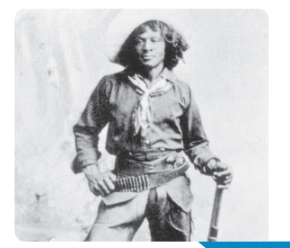
homesteader
- National Archives: Photograph Analysis Worksheet
- National Archives: Written Document Analysis Worksheet
- Venn Diagram
- Nebraska County Map
- Robert Ball Anderson Handout
- African American Settlers Multiple Choice Worksheet
National Photograph Archives: Analysis Worksheet
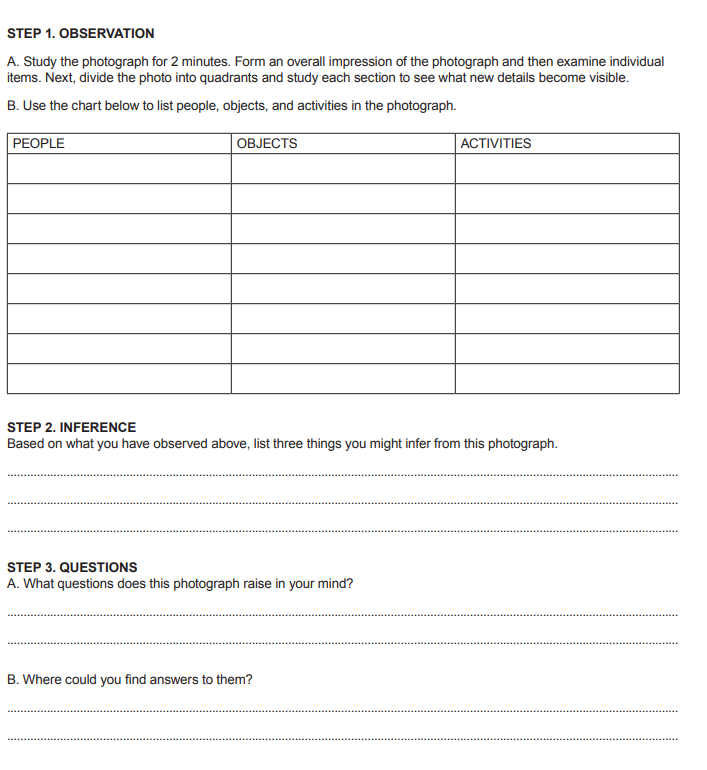
Photographic Analysis Worksheet
1850-1874 African American Settlers
National Written Document Archives: Analysis Worksheet
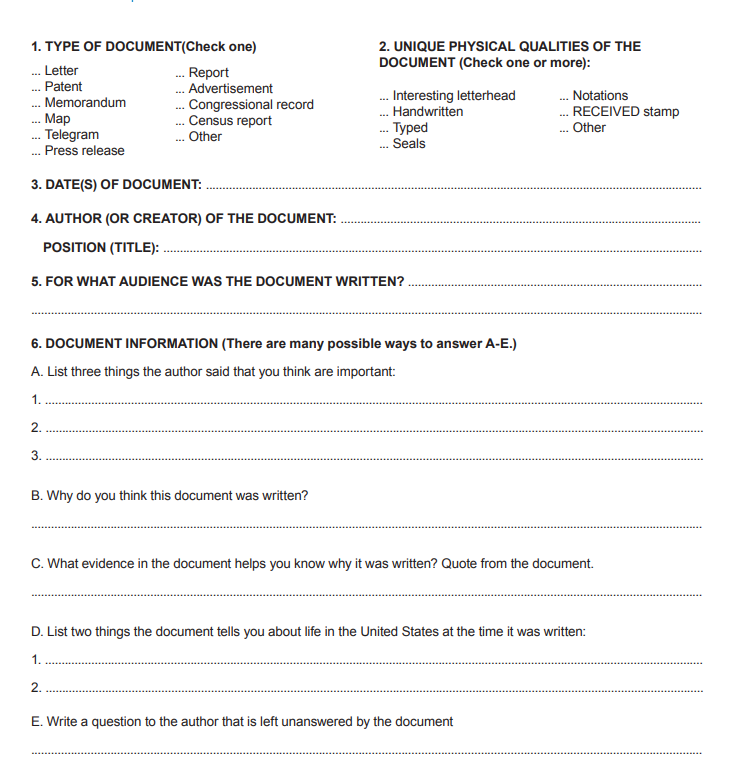
Photograph Analysis Worksheet
Designed and developed by the Education Staff • National Archives and Records Administration, Washington, DC 20408 • http://www.archives.gov
1850-1874 African American Settlers
Venn Diagram
This is a Venn Diagram. You can use it to write down factors that are unique to one item in the left hand sector. Then plot those factors that are unique to another item in the right hand sector. Then look for factors that are present in both and plot those in the middle.
The Venn Diagram is made up of two or more overlapping circles. It is often used in mathematics to show relationships between sets. In language arts instruction, Venn Diagrams are useful for examining similarities and differences in characters, stories, poems, etc.
It is frequently used as a prewriting activity to enable students to organize thoughts or textual quotations prior to writing a compare/contrast essay. This activity enables students to organize similarities and differences visually.

Venn Diagram
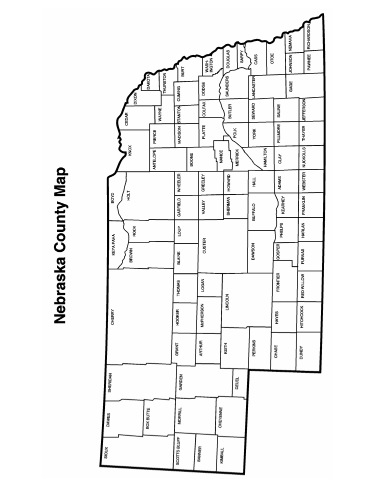
Nebraska County map
1850-1874 African American Settlers
Robert Ball Anderson
Robert Ball Anderson was born into slavery in 1843 in Kentucky. Eventually, Robert Anderson arrived in eastern Nebraska. In 1884, he headed for western Nebraska, and by 1886, he took up a tree claim under the provisions of the Timber Culture Act. Anderson suffered through some financial disasters, but was eventually able to add to his land holdings. By 1918, he was the owner of 2,080 acres of land.
Anderson escaped the racial prejudice of the South, but found he still lived in a society influenced by racist ideas. Nebraska prohibited slavery in the State Constitution of 1875, but had laws that did not recognize mixed marriages and required that the “color” of voters be indicated on registration cards. The white community, however, generally accepted Anderson as he was one of the few black men living in Box Butte County, had a good military record, and was a successful rancher and farmer. As one man stated, “If there was ever a gentleman — if I’ve ever known one — it was Robert Anderson”.
Discussion Questions
1. Who was Robert Anderson?
2. Why do you think he came to Nebraska?
3. What is the Timber Culture Act?
4. Why do you think the Nebraska State Constitution of 1875 prohibited slavery, yet had laws that did not recognize mixed marriages and required that the “color” of voters be indicated on registration cards?
5. What dates were the 13th, 14th, and 15th US Constitutional Amendments passed, and would there be any connections between them and the Nebraska State Constitution of 1875?
6. How was Robert Anderson received by other Nebraskans?
Page 23
1850-1874 African American Settlers
Multiple Choice Worksheet
Name: ___________________________________________________________________________
Directions: Circle the best answer.
1. Which of the following was not a Black homesteader and/or rancher?
A. Robert Bell Anderson
B. Speese
C. Shore
D. S. Butcher
2. In the 19th century, Black settlers in Nebraska were most likely to settle in which of the following locations?
A. eastern Nebraska
B. western Nebraska
C. western Nebraska urban areas
D. eastern Nebraska urban areas
3. Which of the following statements is accurate?
A. Former Black slaves acquired homesteads in Nebraska.
B. Ex slaves could not own land in Nebraska.
C. African Americans were unable to obtain land in western Nebraska.
D. African Americans acquired homesteads but could not own ranches.
4. The Homestead Act...
A. Prohibited all Black settlers from owning land.
B. Prohibited all Black settlers from living in Nebraska.
C. Allowed Black settlers to acquire land if they met the requirements of the Homestead Act.
D. Allowed Black settlers to own ranches, but did not allow them to own farms.
5. Which of the following encouraged African Americans to settle in Nebraska in the 20th century?
A. the ease of transportation facilities
B. the absence of Native Americans
C. the potential for acquiring free land
D. the ability to acquire free seed and farm equipment
6. Which of the following occurred first?
A. Homestead Act
B. 13th Amendment
C. First Nebraska state constitution was written
D. Kansas Nebraska Act
7. In which of the following time periods would you find information about the Speese and Shores families on the Nebraska Studies website?
A. 1800-1849
B. 1850-1874
C. 1875-1899
D. 1900-1924
Appendix Nebraska Department of Education Content Area Standards Social Studies Standards
4th Grade
SS 4.2.1 Students will recognize prices are what consumers pay when they buy a good or service.
SS 4.2.3 Students will make observations about the purpose of various financial institutions in Nebraska.
SS 4.3.1 Students will explore where (spatial) and why people, places and environments are organized in the state.
SS 4.3.2 Students will compare the characteristics of places and regions and their impact on human decisions.
SS 4.3.4 Students will compare and contrast the characteristics of culture statewide.
SS 4.3.5 Students will identify how humans have adapted to and modified different environments in Nebraska.
SS 4.3.6 Students will use geographic skills to make connections to issues and events.
SS 4.4.2 Students will describe and explain the relationships among people, events, ideas, and symbols over time using multiple types of sources.
SS 4.4.3 Students will describe and explain multiple perspectives of historical events.
SS 4.4.4 Students will analyze past and current events, issues, and problems. SS 4.4.5 Students will develop historical research skills. SS 4.3.5 Students will identify how humans have adapted to and modified different environments in Nebraska.
8th Grade
SS 8.1.1 Students will summarize the foundation, structure, and function of the United States government.
SS 8.1.2 Students will describe the roles, responsibilities, and rights as local, state, national, and international citizens and participate in civic service.
SS 8.2.1 Students will explain the interdependence of producers and consumers in a market economy.
SS 8.2.5 Students will identify the basic economic systems in the global economy.organizations, and nations.
SS 8.4.2 (US) Students will analyze the impact of people, events, ideas, and symbols upon US history using multiple types of sources.
SS 8.4.3 (US) Students will analyze another. and interpret historical and current events from multiple perspectives.
SS 8.4.4 (US) Students will identify events, ideas, and symbols upon US causes of past and current events,history using multiple types of sources. issues, and problems.
12th Grade
SS 12.1.1 Students will analyze and evaluate the foundation, structures, and functions of the United States government as well as local, state, and international governments.
SS 12.1.2 Students will address local, state, national or international issues and policies through meaningful civic participation.
SS 12.2.1 Students will assess how market forces guide the owners of land, labor, and capital and determine the allocation of wealth in the economy.
SS 12.2.10 Students will analyze the roles and responsibilities of government in various economic systems.
SS 12.2.12 Students will evaluate how international trade benefits individuals,
SS 12.3.1 Students will analyze where (spatial) and why people, places, and environments are organized on the Earth’s surface.
SS 12.3.2 Students will examine how regions form and change over time.
SS 12.3.4 Students will analyze and interpret patterns of culture around the world.
SS 12.3.6 Students will analyze issues and/or events using the geographic knowledge and skills to make informed decisions.
SS 12.4.1 (US) Students will analyze how major past and current US events are chronologically connected, and evaluate their impact(s) upon one another.
SS 12.4.2 (US) Students will analyze and evaluate the impact of people,
SS 12.4.4 (US) Students will identify
SS 8.4.5 Students will develop and evaluate the effects of past, historical research skills current, and potential future events, issues, and problems. 12
SS 12.4.5 (US) Students will develop historical research skills.
Appendix Nebraska Department of Education Content Area Standards
Language Arts Standards
4th Grade
LA 4.1.5 Vocabulary: Students will build and use conversational, academic, and content-specific grade- level vocabulary;
LA 4.1.6 Comprehension: Students will construct meaning by using prior knowledge and text information while reading grade-level literary and informational text.
LA 4.2.1 Writing Process: Students will apply the writing process to plan, draft, revise, edit, and publish writing using correct spelling, grammar, punctuation, and other conventions of standard English appropriate for grade-level.
LA 4.2.2 Writing Modes: Students will write in multiple modes for a variety of purposes and audiences across disciplines.
LA 4.3.1 Speaking: Students will develop, apply, and refine speaking skills and strategies to communicate key ideas in a variety of situations.
LA 4.3.2 Listening: Students will develop and demonstrate active listening skills across a variety of situations.
LA 4.3.3 Reciprocal Communication: Students will develop, apply, and adapt reciprocal communication skills.
LA 4.4.1 Information Fluency: Students will evaluate, create, and communicate information in a variety of media and formats (textual, visual, and digital).
8th Grade
LA 8.1.6 Comprehension: Students will construct meaning by applying prior knowledge, using text information and monitoring comprehension while reading increasingly complex grade-level literary and informational text.
LA 8.2.1 Writing Process: Students will apply the writing process to plan, revise, edit, and publish writing using correct spelling, grammar, punctuation, using correct spelling, grammar, and other conventions of standard punctuation, and other conventions of English appropriate for grade-level.
LA 8.3.1 Speaking: Students will level. develop, apply, and refine speaking skills and strategies to communicate key ideas in a variety of situations.
LA 8.3.2. Listening: Students will develop and demonstrate active listening skills across a variety of situations.
12th Grade
LA 12.1.6 Comprehension: Students construct meaning by applying prior knowledge, using text information, using text information, and monitoring comprehension while and monitoring comprehension while reading increasingly complex grade- reading increasingly complex grade- level literary and informational text.
LA 12.2.1 Writing Process: Students apply the writing process to plan, draft, revise, edit, and publish writing using correct spelling, grammar, punctuation, and other conventions of standard English appropriate for grade-level.
LA 12.3.1 Speaking: Students will develop, apply, and refine speaking skills and strategies to communicate key ideas in a variety of situations.
